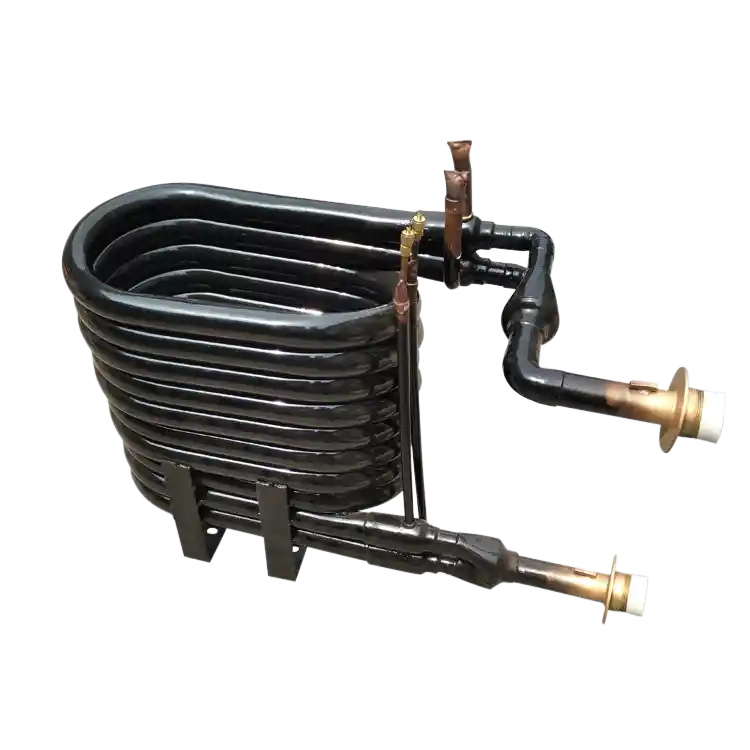Introduction
Tube fabrication is a critical step in the production process of coaxial heat exchangers. This article explores the various aspects of inner tube manufacturing, discussing the methods, materials, and considerations involved. By understanding the intricacies of inner tube fabrication, manufacturers can optimize the performance and reliability of coaxial heat exchangers.
1. Tube Extrusion
Tube extrusion is a common method used in inner tube manufacturing for coaxial heat exchangers. This process involves pushing or pulling a metal or polymer material through a die to produce tubes with precise dimensions. The following subsections outline the materials commonly used in tube extrusion for coaxial heat exchangers.
1.1 Stainless Steel
Stainless steel is a popular choice for inner tube manufacturing due to its excellent corrosion resistance and mechanical strength. It is particularly suitable for applications involving high temperatures or corrosive environments. The table below presents a comparison of stainless steel grades commonly used in tube fabrication.
| Stainless Steel Grade | Corrosion Resistance | Temperature Range |
|---|---|---|
| 304 | Excellent | Up to 870°C |
| 316 | Excellent | Up to 925°C |
| 321 | Excellent | Up to 870°C |
1.2 Copper
Copper is another commonly used material for inner tube fabrication. It offers high thermal conductivity and corrosion resistance, making it suitable for applications where heat transfer efficiency is critical. The following table compares different copper alloys used in tube extrusion for coaxial heat exchangers.
| Copper Alloy | Thermal Conductivity (W/m·K) | Corrosion Resistance |
|---|---|---|
| C11000 Electrolytic Tough Pitch Copper | 390 | Excellent |
| C12200 Phosphorus-Deoxidized Copper | 380 | Excellent |
| C70600 Copper-Nickel Alloy | 29 | Excellent |
1.3 Titanium
Titanium is a lightweight and highly corrosion-resistant material commonly used in specialized applications. Its exceptional strength-to-weight ratio and resistance to various corrosive environments make it suitable for demanding operating conditions. The table below highlights different titanium grades used in inner tube manufacturing.
| Titanium Grade | Corrosion Resistance | Temperature Range |
|---|---|---|
| Grade 2 | Excellent | Up to 400°C |
| Grade 7 | Excellent | Up to 300°C |
| Grade 12 | Excellent | Up to 450°C |
2. Tube Drawing
Tube drawing is another method employed in inner tube manufacturing for coaxial heat exchangers. This process involves pulling a tube through a die to reduce its diameter while maintaining its length. Tube drawing offers enhanced precision and control over the tube dimensions. The subsections below discuss the materials commonly used in tube drawing for coaxial heat exchangers.
2.1 Stainless Steel
The stainless steel grades mentioned in the tube extrusion section, such as 304, 316, and 321, are also commonly used in tube drawing. These stainless steel alloys provide excellent mechanical properties, corrosion resistance, and thermal conductivity, making them suitable for diverse heat exchanger applications.
2.2 Copper
Similar to tube extrusion, copper alloys like C11000, C12200, and C70600 are frequently employed in tube drawing processes for coaxial heat exchangers. These alloys offer high thermal conductivity, corrosion resistance, and ease of fabrication.
2.3 Titanium
Titanium grades like Grade 2, Grade 7, and Grade 12, known for their exceptional corrosion resistance and strength, are also utilized in tube drawing for coaxial heat exchangers. Titanium tubes produced through the tube drawing process offer excellent dimensional accuracy and surface finish.
3. Tube Cutting and Deburring
After tube extrusion or drawing, the tubes undergo cutting and deburring processes to achieve the desired length and smooth edges. These processes ensure that the tubes fit precisely into the coaxial heat exchanger assembly without any obstructions or sharp edges that could hinder the overall performance and safety.
4. Tube Forming (if required)
In certain cases, tube forming processes such as bending or coiling may be necessary to shape the tubes according to the specific requirements of the coaxial heat exchanger design. Tube forming allows for the creation of intricate geometries and configurations, optimizing space utilization and enhancing overall system efficiency.
Conclusion
Tube fabrication is a vital step in the production process of coaxial heat exchangers. Whether through tube extrusion, tube drawing, or tube forming, manufacturers can carefully select materials and employ precise techniques to ensure the production of high-quality inner tubes. By understanding the properties and considerations associated with different materials, such as stainless steel, copper, and titanium, manufacturers can optimize the performance, efficiency, and durability of coaxial heat exchangers, meeting the diverse needs of various industries.


